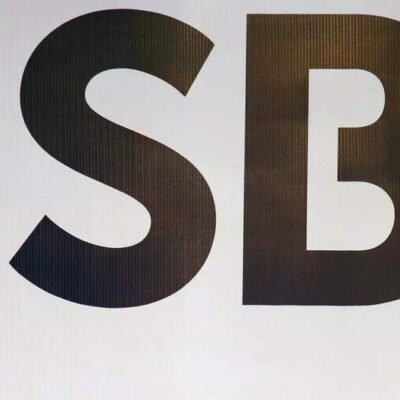A Registered Retirement Income Fund (RRIF) helps you distribute your retirement savings while also helping you take advantage of certain tax benefits. It’s an essential part of your retirement planning, even if it might be awhile before you actually open an RRIF.
What should you know about RRIFs, and when should you expect to open one? Below we’ll answer all your commonly asked questions about a Registered Retirement Income Fund.
What is a Registered Retirement Income Fund (RRIF)?
An RRIF is a retirement account that can feed you a relatively steady stream of income in retirement. The money inside an RRIF continues to grow tax-free, and you’ll only pay taxes when you withdraw the money from your account.
To be clear, this is not the kind of account you open when you’re young and want to start saving money for retirement (that would be a RRSP, TFSA, or non-registered retirement account). This is an account that exists solely to help you manage your retirement savings and disperse it to yourself over your retirement years.
What’s the difference between an RRIF and a RRSP?
An RRIF is basically an extension of an RRSP. Remember, a Registered Retirement Savings Plan (RRSP) is a retirement savings account that allows you to invest contributions and defer paying taxes on your investment’s earnings. Because your contributions are pre-tax, meaning you don’t pay taxes on what you put in, you have to pay taxes on your withdrawals.
Under governmental law, you must close your RRSP at age 71 and start withdrawing money from it. Without an RRIF, you might be forced to withdraw your entire life savings in one go, incurring a hefty tax while you’re at it. But the government isn’t that harsh. They’ll allow you to convert your RRSP into an RRIF. While you still have to withdraw a minimum amount from your RRIF, your money can stay invested. And, like an RRSP, your earnings will grow tax-free.
| Feature | RRSP (Registered Retirement Savings Plan) | RRIF (Registered Retirement Income Fund) |
|---|---|---|
| Purpose | Accumulate retirement savings | Withdraw income during retirement |
| Age Limit to Open | Before age 71 | Usually opened by age 71 (from existing RRSP) |
| Contribution Allowed | Yes (up to annual limit based on income) | No – contributions are not allowed |
| Withdrawal Requirement | Not required before age 71 | Mandatory minimum withdrawals each year |
| Tax Treatment on Withdrawals | Taxable as income | Taxable as income |
| Contribution Deadline | End of the year when you turn 71 | Not applicable |
| Conversion Requirement | Must convert to RRIF or annuity by Dec 31 of year you turn 71 | Already converted from RRSP |
| Minimum Withdrawals | None | Yes – based on a government-prescribed schedule |
| Maximum Withdrawals | No limit (but subject to tax) | No limit (minimums must be met) |
| Investment Options | Stocks, bonds, ETFs, GICs, mutual funds, etc. | Same as RRSP |
| Tax-Sheltered Growth | Yes | Yes (until withdrawn) |
| Primary Use | Save and grow funds during working years | Provide income during retirement |
Can you contribute to an RRIF?
No. An RRIF is an income distributing retirement account, not a savings account. RRIFs are typically funded by transferring funds from an RRSP or another RRIF. While you can contribute to a RRSP until you’re 71 years of age, once you convert your RRSP into an RRIF, you can no longer make contributions. The money inside an RRIF can still grow off your investments, however.
When should you convert your RRSP to an RRIF?
You can theoretically convert your RRSP into an RRIF at any time, though you should certainly be strategic about it. Once you convert your RRSP to an RRIF, you’ll have to set up a withdrawal schedule, meaning you’ll have to tell your RRIF provider how much you want to receive and how frequently.
The CRA considers RRIF withdrawals taxable income, and you’ll have to report them on your annual tax filing. The amount you pay in taxes depends entirely on how much income you’re making at the time of withdrawal, with a higher income putting you in a higher tax bracket.
This is why you should be strategic about when you convert your RRSP to an RRIF. If you make the conversion when you stop earning income, you’ll be in a lower tax bracket, and you’ll pay lower taxes overall. Convert your RRSP while you’re still earning income, however, and the extra money from the RRIF could push you into a higher tax bracket.
Do I have to convert my RRSP to an RRIF at age 71?
Yes. By law, you have to turn your RRSP into an RRIF by December 31 of the year you turn 71.
What are your investment options in an RRIF?
One of the most exciting parts of an RRIF is that you can continue to invest your money after you’ve closed your RRSP. Though at that point in your life, you’ll probably be investing conservatively, you do have options. Here are just a few investments you may be able to choose in your RRIF.
How much do you have to withdraw from your RRIF each year?
Though RRIFs are pretty flexible retirement accounts, they have one major rule you must follow: withdrawal minimums.
Every year, you must withdraw a minimum amount from your RRIF. You could do this all at once, or you can spread it out over the year.
The minimum mandatory withdrawal depends on your age and the funds inside your RRIF. For every age there’s a corresponding percentage that tells you how much you must withdraw. For instance, if you’re 71 years old, then the minimum withdrawal is 5.28% of your RRIF (you use the Fair Market Value of your account). This percentage will increase every year until you turn 95, after which it caps at 20%.
If you’re married and your spouse is younger, you can use their age instead of yours to calculate your minimum required withdrawal.
Can I choose the frequency of my RRIF withdrawals?
Of course! You can choose to receive RRIF withdrawals every month, quarter, six months, or even a year. You can also choose how much you want to withdraw, so long as the amount is above the minimum.
I have a few RRSPs: should I convert each to an RRIF?
There’s no law saying you have to hold only one RRIF. If you want to convert each RRSP into an individual RRIF, by all means — go for it. Just keep in mind it’ll be more work for you to manage each one, not to mention you could accumulate more investment earnings if you bring all your money together.
For that reason most Canadians tend to roll their RRSPs into one RRIF, as it’s far easier to manage.
What are the benefits of an RRIF?
Tax-deferral
Perhaps one of the most exciting parts of a RRIF is the tax-deferral aspect. Much like an RRSP, an RRIF allows your money to grow on investments without requiring you to pay taxes along the way. This helps you keep more money investing, taking full advantage of compound interest even after you’re retired.
Flexibility
RRIFs give you immense flexibility in structuring your withdrawals. For example, if you want to leave your money invested for a longer period of time, you could choose to withdraw only the minimum in the beginning, with larger withdrawals later in retirement. You could also choose to withdraw a larger amount in one year, especially if you’re planning for a bigger expense, such as a new house or travels.
Investing
An RRIF presents you with a number of investment opportunities, from individual stocks to ETFS to bonds. Though you probably won’t be investing aggressively when you have your RRIF, even a conservative investment could help you keep up with or outpace the rate of inflation.
Estate planning
You can name a spouse or common-law partner as a “successor annuitant,” allowing the RRIF to transfer tax-deferred upon your death. This helps reduce tax liability and simplifies estate planning.
The Foolish bottom line on RRIFs
An RRIF can be a fundamental component of your retirement planning. Instead of withdrawing all of your retirement savings in one go, which would result in a hefty tax bill, you can distribute your money steadily over time.
This also gives your money more time to grow: though you can’t contribute more money to an RRIF, you can still enjoy tax-deferred earnings on compound growth.
FAQs
What are the disadvantages of RRIF?
RRIFs require mandatory minimum withdrawals each year, which are fully taxable as income and can impact government benefits like OAS. Unlike RRSPs, you can’t make new contributions, and withdrawing more than necessary may deplete your savings too quickly.
Is it better to withdraw from RRSP or RRIF?
It’s generally better to withdraw from your RRSP before converting to a RRIF, as RRSP withdrawals are fully taxable and may incur higher tax rates or withholding penalties, whereas a RRIF allows for flexible and tax-deferrable withdrawals once you’ve converted by age 71. After conversion, RRIFs provide structured, age-based minimum withdrawals, making them a more efficient way to manage retirement income and taxes .
What happens when a RRIF matures?
A RRIF doesn’t technically mature; it continues until the account is depleted or the holder passes away. Upon death, the remaining funds can transfer tax-deferred to a spouse or be taxed as income on the final return if no eligible beneficiary is named.





